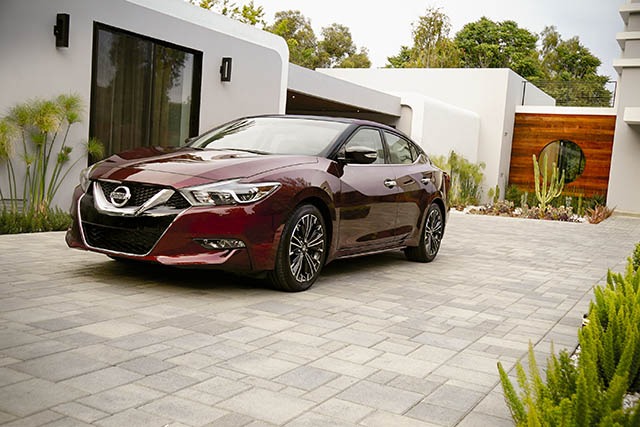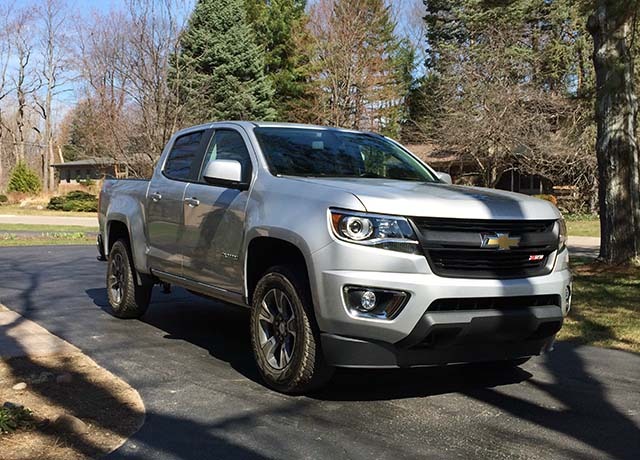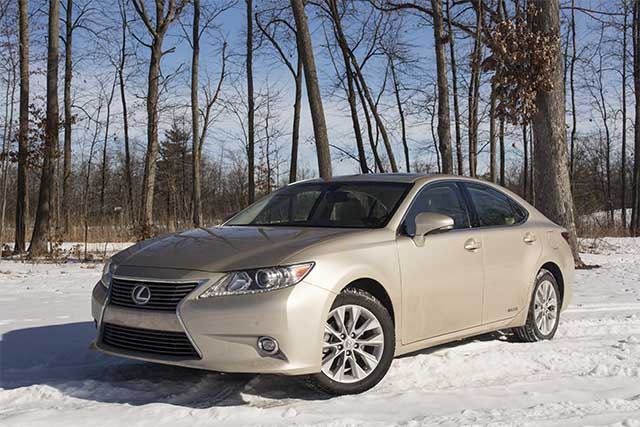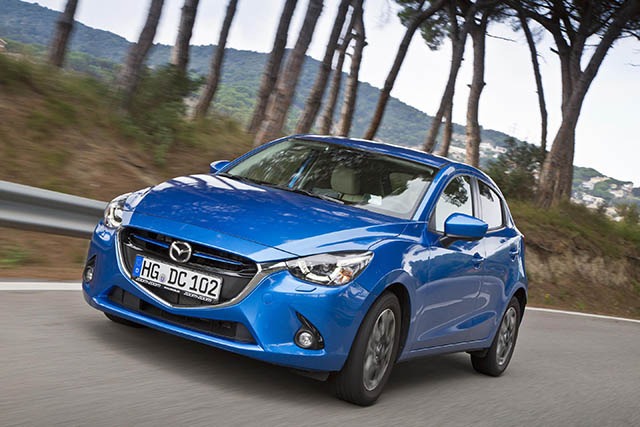-
Posts
32,884 -
Joined
-
Last visited
-
Days Won
5
Content Type
Forums
Articles
Garage
Gallery
Events
Store
Collections
Everything posted by William Maley
-
Nissan is making a big deal about the Maxima at the moment. But a few years back, the automaker was considering to kill the model. Automotive News reports that back in 2012, the industry was in the midsts of recovering from the recession and high gas prices were causing many automakers to work on compacts and smaller vehicles. Nissan was no exception to that trend as they were introducing the new Nissan Leaf and working on a new compact. "A lot of people assume it was a forgone conclusion that, of course we will continue with another Maxima. But frankly, the forgone conclusion at that moment was that there would not be another Maxima," said Pierre Loing, vice president of Nissan's North American product planning. Loing joined Nissan in early January and found himself with a difficult task: How do you convince a company that was focused on compacts and making its platforms more global to build another generation of a model that was only sold in North America? The answer lay in the history of the brand. The Maxima holds the title of the longest-selling nameplate in the U.S. for Nissan (Before anyone says it, the Z is the oldest, but was discontinued for a time), which gives the Maxima a fan base that spreads many generations. Also helping was the Maxima having better name recognition that Nissan itself. Loing's convincing worked. In early 2012, CEO Carlog Ghosn gave the green light for the project and the rest is history. Also check out: 2016 Nissan Maxima First Ride Review Source: Automotive News (Subscription Required) View full article
- 19 replies
-
- Almost Killed
- Maxima
-
(and 2 more)
Tagged with:
-

Nissan Almost Sent the Maxima To the Great Parking Lot In the Sky
William Maley posted an article in Nissan
Nissan is making a big deal about the Maxima at the moment. But a few years back, the automaker was considering to kill the model. Automotive News reports that back in 2012, the industry was in the midsts of recovering from the recession and high gas prices were causing many automakers to work on compacts and smaller vehicles. Nissan was no exception to that trend as they were introducing the new Nissan Leaf and working on a new compact. "A lot of people assume it was a forgone conclusion that, of course we will continue with another Maxima. But frankly, the forgone conclusion at that moment was that there would not be another Maxima," said Pierre Loing, vice president of Nissan's North American product planning. Loing joined Nissan in early January and found himself with a difficult task: How do you convince a company that was focused on compacts and making its platforms more global to build another generation of a model that was only sold in North America? The answer lay in the history of the brand. The Maxima holds the title of the longest-selling nameplate in the U.S. for Nissan (Before anyone says it, the Z is the oldest, but was discontinued for a time), which gives the Maxima a fan base that spreads many generations. Also helping was the Maxima having better name recognition that Nissan itself. Loing's convincing worked. In early 2012, CEO Carlog Ghosn gave the green light for the project and the rest is history. Also check out: 2016 Nissan Maxima First Ride Review Source: Automotive News (Subscription Required)- 19 comments
-
- Almost Killed
- Maxima
-
(and 2 more)
Tagged with:
-
2. Sports Roadster 5. I want to say it was around 5,000 units
-
Buyers can't get enough of GM's midsize trucks. The company says that the Chevrolet Colorado only sit on dealer lots for an average 12 days before being snapped up. This is causing dealers to asking to ask for more trucks. GM's Wentzville, Mo plant is already pumping out as many as they can. But GM has a found a few ways to wring out a few more models. Automotive News reports that the plant has recently instituted a broader schedule reshuffling which saw a unpaid lunch break be cut to eliminate a six-minute production lull which means an extra 18 minutes of production in a three shift day and more importantly - an extra 3,500 trucks per year. GM is also hiring as many as 1,000 'flex' workers to fill weekend shifts which should boost production by more than 2,000 trucks per month. This comes after the plant brought on a third shift in March to help with the massive demand. With this increase in truck production, something had to be cut. In this case it was GM's full-size vans. For every two trucks built, one van rolls off the production line. Source: Automotive News (Subscription Required) View full article
- 10 replies
-
- Chevrolet Colorado
- General Motors
-
(and 3 more)
Tagged with:
-

GM Squeezes Wentzville Plant To Produce More Midsize Trucks
William Maley posted an article in General Motors
Buyers can't get enough of GM's midsize trucks. The company says that the Chevrolet Colorado only sit on dealer lots for an average 12 days before being snapped up. This is causing dealers to asking to ask for more trucks. GM's Wentzville, Mo plant is already pumping out as many as they can. But GM has a found a few ways to wring out a few more models. Automotive News reports that the plant has recently instituted a broader schedule reshuffling which saw a unpaid lunch break be cut to eliminate a six-minute production lull which means an extra 18 minutes of production in a three shift day and more importantly - an extra 3,500 trucks per year. GM is also hiring as many as 1,000 'flex' workers to fill weekend shifts which should boost production by more than 2,000 trucks per month. This comes after the plant brought on a third shift in March to help with the massive demand. With this increase in truck production, something had to be cut. In this case it was GM's full-size vans. For every two trucks built, one van rolls off the production line. Source: Automotive News (Subscription Required)- 10 comments
-
- Chevrolet Colorado
- General Motors
-
(and 3 more)
Tagged with:
-
Late last year, I had the chance to pilot the 2014 Lexus ES 350. In my review I said that while the new ES is a noticeable improvement over the old one, competitors such as the Buick LaCrosse have surpassed it. But Lexus has an possible ace up their sleeve and it happens to be the hybrid version of ES. Not many competitors offer a fuel efficient version, so does it give the ES an edge? What differentiates the ES 300h from the ES 350? Not much from the exterior aside from blue tint on the badge, hybrid badges on the door sills, and the"h" on the rear badge. The interior is the same aside from a new instrument cluster with an eco/power gauge and a EV mode button. One item I do have to call out on the ES 300h’s interior is the optional Bamboo trim. Not only is it sharp looking, but adds a nice touch of class to the interior. Power comes from Lexus’ Hybrid Drive system which pairs a 2.0L four-cylinder and a electric motor producing a total output of 200 horsepower. A CVT sends power to the front wheels. This powertrain seems more attune the ES’ mission of providing a smooth and quiet ride. The powertrain is able to get the vehicle moving without much stress or noise in city traffic. Merging onto freeway or trying to make a pass does reveal some noisy clatter from the engine. The CVT doesn’t help matters as the drone that plagues many CVTs when you push further down on the accelerator pedal comes in. Fuel economy for the ES 300h is rated 40 City/39 Highway/40 Combined. My week saw an average of 37 MPG. This was slightly disappointing, but at the time I was driving the ES Hybrid, temps were below freezing which would explain the drop. As for ride and handling, the ES 300h follows in the footsteps of the standard ES 350. The suspension provides a smooth ride. Any imperfections on the road are dealt with and don’t make they way into the cabin. Also not making an appearance inside the cabin is road and wind noise, Thanks to thicker windows and added insulation, the ES is a very quiet car. Helping matters is one of the smoothest transitions from hybrid power to electric power. The only way to know that the hybrid system has kicked on or off is a EV Mode light in the instrument cluster. If your planning to tackle the winding roads, then leave the ES Hybrid at home. Like the standard ES, the hybrid shows a bit of body roll and steering doesn’t have any sign of feel. If I was considering an ES, I would go for the 300h since it fits the ideals of the model - a quiet and comfortable ride paired with a somewhat upscale cabin. Add in the fuel economy and the ES 300h might be a compelling choice for those who just want something luxurious. But for almost the same price as this ES 300h, you can get into a fully loaded Toyota Avalon Hybrid which offers most of the same features as the ES, along with a much better look and a more sporty drive if you are interested in that. So while the ES 300h does give a slight edge to ES, it gets undercut by another member of the family. Disclaimer: Lexus Provided the ES300h, Insurance, and One Tank of Gas Year: 2015 Make: ES Model: 300h Trim: N/A Engine: 2.5L DOHC, 16-Valve with VVT-i Four-Cylinder, Electric Motor Driveline: Front-Wheel Drive, CVT Horsepower @ RPM: (Gas) 156 @ 5,700, (Total) 200 Torque @ RPM: (Gas) 156 @ 4,500 Fuel Economy: City/Highway/Combined - 40/39/40 Curb Weight: 3,660 lbs Location of Manufacture: Miyawaka, Fukuoka Base Price: $40,430 As Tested Price: $46,995 (Includes $925.00 Destination Charge) Options: Hard Disk Drive Navigation system with Backup Camera - $1,795 Luxury Package - $1,370 HID Headlamps - $565.00 Blind Spot Monitoring with Rear Cross Traffic Alert - $500.00 Intuitive Parking Assist - $500.00 Power Trunk Closer - $400.00 Bamboo & Leather Trimmed Steering Wheel - $300.00 Power Rear Sunshade - $210.00 View full article
-
Late last year, I had the chance to pilot the 2014 Lexus ES 350. In my review I said that while the new ES is a noticeable improvement over the old one, competitors such as the Buick LaCrosse have surpassed it. But Lexus has an possible ace up their sleeve and it happens to be the hybrid version of ES. Not many competitors offer a fuel efficient version, so does it give the ES an edge? What differentiates the ES 300h from the ES 350? Not much from the exterior aside from blue tint on the badge, hybrid badges on the door sills, and the"h" on the rear badge. The interior is the same aside from a new instrument cluster with an eco/power gauge and a EV mode button. One item I do have to call out on the ES 300h’s interior is the optional Bamboo trim. Not only is it sharp looking, but adds a nice touch of class to the interior. Power comes from Lexus’ Hybrid Drive system which pairs a 2.0L four-cylinder and a electric motor producing a total output of 200 horsepower. A CVT sends power to the front wheels. This powertrain seems more attune the ES’ mission of providing a smooth and quiet ride. The powertrain is able to get the vehicle moving without much stress or noise in city traffic. Merging onto freeway or trying to make a pass does reveal some noisy clatter from the engine. The CVT doesn’t help matters as the drone that plagues many CVTs when you push further down on the accelerator pedal comes in. Fuel economy for the ES 300h is rated 40 City/39 Highway/40 Combined. My week saw an average of 37 MPG. This was slightly disappointing, but at the time I was driving the ES Hybrid, temps were below freezing which would explain the drop. As for ride and handling, the ES 300h follows in the footsteps of the standard ES 350. The suspension provides a smooth ride. Any imperfections on the road are dealt with and don’t make they way into the cabin. Also not making an appearance inside the cabin is road and wind noise, Thanks to thicker windows and added insulation, the ES is a very quiet car. Helping matters is one of the smoothest transitions from hybrid power to electric power. The only way to know that the hybrid system has kicked on or off is a EV Mode light in the instrument cluster. If your planning to tackle the winding roads, then leave the ES Hybrid at home. Like the standard ES, the hybrid shows a bit of body roll and steering doesn’t have any sign of feel. If I was considering an ES, I would go for the 300h since it fits the ideals of the model - a quiet and comfortable ride paired with a somewhat upscale cabin. Add in the fuel economy and the ES 300h might be a compelling choice for those who just want something luxurious. But for almost the same price as this ES 300h, you can get into a fully loaded Toyota Avalon Hybrid which offers most of the same features as the ES, along with a much better look and a more sporty drive if you are interested in that. So while the ES 300h does give a slight edge to ES, it gets undercut by another member of the family. Disclaimer: Lexus Provided the ES300h, Insurance, and One Tank of Gas Year: 2015 Make: ES Model: 300h Trim: N/A Engine: 2.5L DOHC, 16-Valve with VVT-i Four-Cylinder, Electric Motor Driveline: Front-Wheel Drive, CVT Horsepower @ RPM: (Gas) 156 @ 5,700, (Total) 200 Torque @ RPM: (Gas) 156 @ 4,500 Fuel Economy: City/Highway/Combined - 40/39/40 Curb Weight: 3,660 lbs Location of Manufacture: Miyawaka, Fukuoka Base Price: $40,430 As Tested Price: $46,995 (Includes $925.00 Destination Charge) Options: Hard Disk Drive Navigation system with Backup Camera - $1,795 Luxury Package - $1,370 HID Headlamps - $565.00 Blind Spot Monitoring with Rear Cross Traffic Alert - $500.00 Intuitive Parking Assist - $500.00 Power Trunk Closer - $400.00 Bamboo & Leather Trimmed Steering Wheel - $300.00 Power Rear Sunshade - $210.00
- 8 comments
-
I'll admit I'm jealous. Good work.
-
From the album: Mud's Picture Filing Cabinet
-
From the album: 2015 Lexus ES 300h
-
From the album: 2015 Lexus ES 300h
-
From the album: 2015 Lexus ES 300h
-
From the album: 2015 Lexus ES 300h
-
From the album: 2015 Lexus ES 300h
-
From the album: 2015 Lexus ES 300h
-
From the album: 2015 Lexus ES 300h
-
From the album: 2015 Lexus ES 300h
-
From the album: 2015 Lexus ES 300h
-
From the album: 2015 Lexus ES 300h
-
From the album: 2015 Lexus ES 300h
-
This has been playing constantly after B.B. King passed.
-
The next-generation Mazda2 won't be arriving on our shores anytime soon. Automotive News reports that cheap gas prices and tight supply of vehicles coming from Mazda's new factory in Salamanca, Mexico has caused Mazda's North American arm to pass on the 2 for the time being. "We could have had it, but we would have had a number that didn't make much sense with 600 dealers and with the marketing it takes to launch a new car. I wanted to allocate resources to those products that make us and our dealers considerably more profit than a Mazda2 does," said Robert Davis, senior vice president of U.S. operations at Mazda. The current Mazda2 was never a big seller for the brand. Last year, the brand moved 13,615 units, an increase of 14 percent. For the time being, the Scion iA sedan will be only way you can get into a Mazda2 in the U.S. But Davis does say that if anything changes, they'll be ready to sell the Mazda2. Source: Automotive News (Subscription Required) View full article
-
- Gas Prices
- Mazda2
-
(and 3 more)
Tagged with:
-
The next-generation Mazda2 won't be arriving on our shores anytime soon. Automotive News reports that cheap gas prices and tight supply of vehicles coming from Mazda's new factory in Salamanca, Mexico has caused Mazda's North American arm to pass on the 2 for the time being. "We could have had it, but we would have had a number that didn't make much sense with 600 dealers and with the marketing it takes to launch a new car. I wanted to allocate resources to those products that make us and our dealers considerably more profit than a Mazda2 does," said Robert Davis, senior vice president of U.S. operations at Mazda. The current Mazda2 was never a big seller for the brand. Last year, the brand moved 13,615 units, an increase of 14 percent. For the time being, the Scion iA sedan will be only way you can get into a Mazda2 in the U.S. But Davis does say that if anything changes, they'll be ready to sell the Mazda2. Source: Automotive News (Subscription Required)
-
- Gas Prices
- Mazda2
-
(and 3 more)
Tagged with:
-
He lives above the snow-belt of the snow-belt. Then Miata with a Hardtop


















